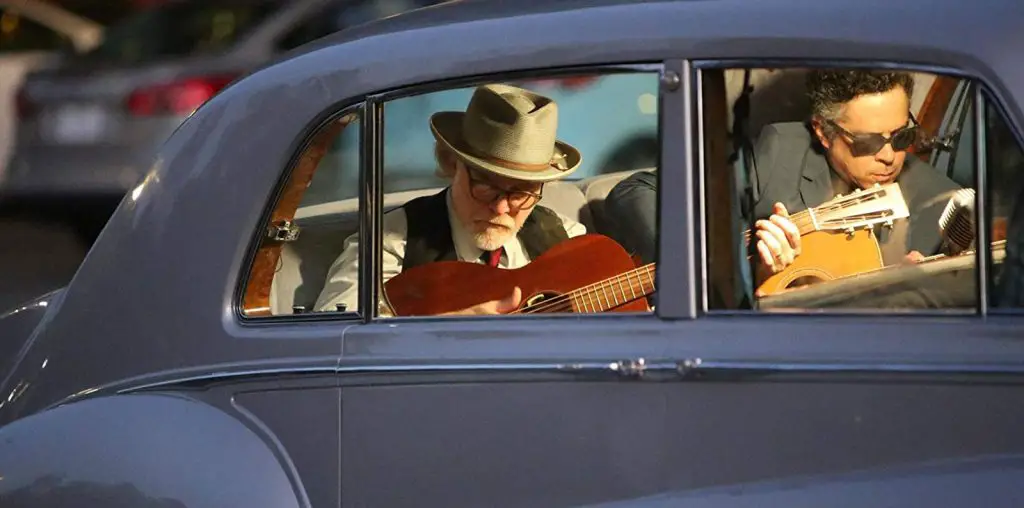
For a good four hours, “The New Americans” introduces you to and expands the lives of immigrants that have come to the United States, trying to find their footing in potential successes. They are of many types, including Palestinian, Mexican, Nigerian, and Dominican. In the final part of “The New Americans”, as if these stories weren’t already engrossing, “Indian” is added on in the form of Anjan Bacchu of Bangalore, India. It’s lucky that part three is the longest, because there’s a lot to learn about Anjan. Bangalore is the center of India’s high-tech industry, but Anjan, a software engineer, has long harbored a desire to come to America for two years to California’s Silicon Valley, to find work.
This also includes marriage for Anjan, who finds his bride through what American eyes might see as an unconventional method. Then again, with how technology has boomed, it might not be that unconventional. Anyway, with this many stories tacked on, editing all of this down was probably an immense task, especially when the Nigerian story has split into two, to not only feature Israel and Ngozi Nwidor, but also Barine Wiwa-Lawani and her daughters. The funny part about it is that this last part seems to sense whom we might care about and whom we might not really want to pay attention to so much. In this case, Jose Garcia, one of the Dominican baseball players, is given some attention, but overall, not that much. That’s not to say that he isn’t an important subject of this documentary, but just that his story went as far as it could.
One of the major themes featured here is isolation and loneliness, shared by two women: Ventura Flores and Harshini Bacchu, Anjan’s wife. The Flores family has packed up and headed to Garden City, Kansas, but Ventura doesn’t like this new place because she feels completely isolated. There are no relations to be found in Garden City, and it’s not like Mexico where she could walk around and do various things. Here, there’s not much else to do but stay in the house and handle different chores. For Harshini, the isolation is very much the same, and Anjan doesn’t seem quite capable of understanding what she’s going through, as he’s so concerned about his new job and such. However, when the Flores’ move to California, Ventura is much more pleased as she has relatives over there. As for Harshini, it seems to go away over time. After all, the time when she arrives after her husband is also her very first time in the States.
Pregnancy is present in the lives of the Nwidors and Bacchus. Not only is Ngozi pregnant, but Harshini is as well and as such, both families have different goals for these children. For Israel, it’s the act of teaching his child everything he knows, passing wisdom down from father to son. For Anjan, he wants his kid born a U.S. citizen, before the possibility crops up that they may have to go back to India, due to the dot-com bust that affects many in Anjan’s field.
“The New Americans” helps fuel the fact that documentaries like “Nanook of the North” to the Maysles Brothers’ “Salesman” to “Hoop Dreams” and others, deserve their own cable channel. Heck, those National Geographic documentaries could make an appearance as well, though they should be relegated to the late night when alcohol connoisseurs have Jack Daniels, Jim Beam, and Budweiser egging them on to drink as much as possible to make that emu look hotter than anything. Seriously though, with countless movie channels such as HBO, Showtime, and Starz!, as well as its bastard children such as Encore, Starz! Theater, and others, these documentaries need their airtime, even though PBS provides a very nice berth for many of them to have their chance (“The New Americans” will have its chance on March 29, 30, and 31 on PBS, in addition to the screening at SXSW). And for those that see documentaries as “boring” and “educational”, many of them aren’t always like the ones you remember in high school. In short, documentaries let us look in on lives that we either don’t have access to or don’t give much attention toward. “The New Americans” successfully puts faces on immigration, overshadowing the organized statistics pushed at us through the media. To watch these people get used to the United States and even attempt to learn English is an absolutely rewarding experience. This mega-documentary should have its place on Kartemquin Films’ mantle, right next to “Hoop Dreams”, because it not only puts a magnifying glass on immigration, but is also a riveting work that will stand among the best of documentaries.
